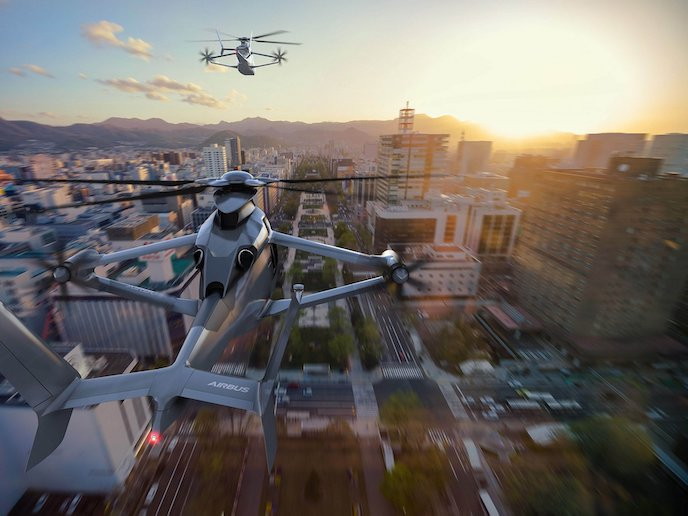Making rotorcraft safer: Data fusion pinpoints when maintenance needed
The Airbus RACER helicopter(opens in new window) is an uncompromising piece of technology. Scheduled for a first flight in 2020, it is expected to be 50 % faster than traditional helicopters while consuming 25 % less fuel. It provides a unique combination of lift and forward thrust, and stands out with its unique design featuring two lateral propellers on its box-shaped wings. These features do not come without technological challenges. Unlike its traditional counterparts, the RACER requires a set of lateral gearboxes to accommodate the angle between transmission and propeller shafts. This is where the iGear project comes in. As power transmission in rotorcrafts is usually exposed to extreme loads and high levels of vibrations, regular maintenance is required. So is accurate, real-time information on the health condition of the machine. iGear answers this need with a multi-sensor health monitoring system specifically built for the RACER’s lateral gearboxes. “Health Usage and Monitoring Systems (HUMS) are needed to monitor machine health. iGear takes into account the full range of health characteristics, particularly with respect to gears and bearings. It will possibly be tested on the gearbox rig, and it will help safeguard any gearbox architecture that includes advanced technologies such as those developed by Avio Aero for the RACER lateral gearbox,” says Prof. Andrew Starr, head of the Through-life Engineering Services (TES)(opens in new window) Institute at Cranfield University. The Airbus RACER brings additional complexity to the transmission system, which strongly challenges current HUMS. It requires the monitoring of rotating machinery’s vibration signals under variable operating conditions. iGear achieves this by generating a map of each individual condition indicator (CI) extracted from vibration signals within a defined range of operating regimes. The system’s main innovation lies in the use of numerous parameters in real time, over a large spectrum of speeds and loads. “Data fusion is used to combine the inputs with knowledge over time, to give a robust and trustworthy diagnosis of state. The process is entirely compatible with industry’s sets of rules and procedures, giving experts the opportunity to observe and adapt its performance,” Prof. Starr explains. Identifying the right technologies was one of the project’s most critical endeavours, so the iGear team surveyed a wide range of sensors and diagnostic algorithms. The sensors, for starters, needed to cover a wide range of parameters while being sensitive, consistent and reliable. They needed to meet environmental requirements, as well as have a low weight and cost and be easy to integrate with the aircraft. The algorithms, on the other hand, had to combine sensitivity with robustness. They had to provide reliable and trusted results with reasonable computational load. Finally, they were meant to give useful life-cycle information to the aircraft operator so as to enable early prioritisation of maintenance tasks. “Laboratory trials on an industrial gearbox are still work in progress, but they show good sensitivity to seeded faults (features introduced in the laboratory) with rich data allowing for the validation and verification of the algorithms. The next steps will cover a wider set of scenarios, before the system can be installed on an aircraft gearbox,” Prof. Starr explains. The iGear system is suitable for aircrafts other than the RACER. “Physically, it needs a simple mounting point allowing good signal transmission. The algorithms can be tuned depending on operating conditions, as well as the understanding of health states,” Prof. Starr concludes.







